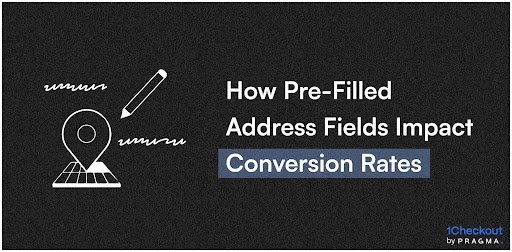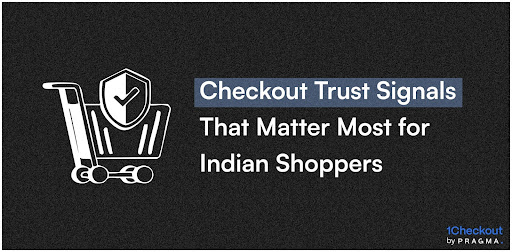Avoiding Payment Frauds in the Ecommerce World

Helping D2C Brands tackle fraudulent practices in India
With the rise in digitisation and internet access even in the rural areas, ecommerce is growing at an exponential speed in India.
According to a report by the Association of Certified Fraud Examiners, e-commerce fraud accounts for 34% of all reported fraud cases. And the total amount of e-commerce fraud losses was estimated to be $4.2 billion (2020), according to a report by Statista.
With the increased growth in Payment modes, providers etc., comes an increased opportunity for scammers to commit ecommerce payment fraud.
Which is why Payment Fraud is a major concern for all online businesses.
What is Payment Fraud in Ecommerce?
Ecommerce Fraud or specifically ‘Ecommerce Payment Fraud’ refers to the use of fraudulent methods to make payments for goods or services purchased online.
Payment fraud can occur at different stages of an e-commerce transaction, such as during the checkout process, while the payment is being processed, or after the transaction has been completed.
Ecommerce Payment Fraud is a serious issue for e-commerce businesses as it can result in significant financial losses, damage to reputation and loss of customer trust. E-commerce businesses need to take measures to prevent and detect fraudulent activity, such as using fraud detection software, two-factor authentication, and monitoring transactions for suspicious activity.
How serious of an issue is Payment Fraud for Indian D2C brands?
Payment fraud is a serious issue for all e-commerce businesses, including Indian D2C brands. In fact, payment fraud has become more prevalent in recent years, as e-commerce has grown in India and more people have started shopping online. According to a report by global payment technology company, Stripe, India has the highest fraud rate in the Asia-Pacific region, with the average fraud rate being 1.8%.
One of the main reasons for the high fraud rate in India is the prevalence of payment methods like cash on delivery (COD), which are more susceptible to fraud. In addition, many Indian consumers are still hesitant to use credit or debit cards online, which means that e-commerce businesses often have to rely on alternative payment methods that are more vulnerable to fraud.
Fraudulent activities like chargebacks and account takeovers can lead to significant financial losses for Indian D2C brands, as well as damage to their reputation and customer trust.
Moreover, Indian D2C brands may also face additional challenges when it comes to managing payment fraud, such as lack of access to robust fraud prevention tools and limited resources to invest in fraud detection and prevention measures.
Given the increasing threat of payment fraud in India, it's important for Indian D2C brands to take proactive steps to protect their business and customers. This may involve investing in fraud prevention technologies, implementing strict fraud detection and prevention policies, and providing customer education on how to safeguard their personal information and payment details.
Types of Ecommerce payment fraud
- Stolen payment information fraud: This type of fraud involves the use of stolen payment information, such as credit card numbers or bank account details, to make unauthorised purchases.
- Chargeback fraud/Friendly fraud: In the case of chargeback fraud the criminal purchases an item online and then requests a chargeback from the bank/payment processor on the account of an invalid transaction. The credit/bank then returns the amount to the customer, while expecting the retailer to make the payment.
The reason chargeback is also called ‘Friendly fraud’ is because the fraudster claims to be a genuine case and requests for money back or in other cases claims that the product was cancelled or did not reach them when that might not be the case.
In either case, the brand loses money over transaction fees and other overheads. - Identity theft: This type of fraud involves the use of stolen or fake identities to make fraudulent purchases or to open fraudulent accounts. This can involve using stolen personal information such as social security numbers or driver's licence numbers.
- Pagejacking: Pagejacking is another way of hijacking customers visiting an ecommerce website and directing them to a malicious website. Here the client then is fooled into submitting their personal data and payment details, which are then used to make fraudulent purchases.
- Triangulation fraud: Triangulation fraud occurs when a fraudster sets up a fake e-commerce website to sell non-existent or counterfeit products. They then use legitimate payment processors to process payments, while not delivering any products.
- Affiliate fraud: In affiliate fraud, fraudsters create fake accounts and generate fraudulent referrals to e-commerce sites, earning commissions on sales that they did not actually generate.
- Man-in-the-middle (MITM) attacks: In a MITM attack, a fraudster intercepts communication between the customer and the e-commerce site to obtain payment information or redirect the payment to a fraudulent account.
- Credit card fraud: Credit card fraud encompasses all kinds of card fraud including Credit/Debit/ATM cards. When a fraudster uses someone else's credit card to make a purchase by either stealing someone's physical card or by getting ahold of someone's credit card number is denied as credit card fraud.
- Phishing: One of the oldest scams in the book. Phishing scam is often email based, where the target is asked to share sensitive information.
In the case of ecommerce, scammers pose as ecommerce brands sending emails disguised as order confirmations or order updates with the objective of extracting sensitive data by leading users to suspicious fraudulent websites. - Account takeover fraud: When con artists access a customer's online account and make fraudulent purchases using stored payment cards, it is known as account takeover fraud.
Account takeover fraud affected 23% of brands globally last year, with con artists using phishing emails or weak passwords to gain access to customers' accounts.
As to the type of fraud that a brand is prone to, it depends on its size as per Shopify.
- SMBs (Small and Medium Businesses) face friendly fraud, card testing and phishing,
- Mid-Market companies are more likely to face the same including identity theft.
- While enterprises have the resources to avoid phishing and other frauds they are more likely to face loyalty fraud.
How can D2C businesses safeguard themselves from fraudulent payments?

While trying to protect your business from all of these fraudulent practices might seem like an uphill battle, there are tried and tested steps that you can take to reduce fraud risk. Now let’s take a look at what makes Payments secure on Checkout Systems like our very own 1Checkout.
- Use Fraud Detection Systems:
A Fraud Detection System is a third-party software that you can deploy to identify red-flag transactions and protect your store and payment pages from card testing fraud, friendly fraud, and chargeback fraud. - Use payment verification tools:
D2C businesses can use payment verification tools such as Address Verification System (AVS), Card Verification Value (CVV), and 3D Secure (3DS) to verify the authenticity of the payment card. - Set transaction limits:
D2C businesses can set transaction limits for their payment gateways to reduce the risk of large fraudulent transactions. - Use multiple payment gateways:
D2C businesses can use multiple payment gateways to diversify their payment options and reduce the risk of payment fraud.
Note: !Checkout integrates multiple Payment Gateways and offers up to 50% refunds on Payment Gateway Charges as well. - PCI-DSS compliant:
Payment Card Industry Data Security Standard (PCI DDS) is a mandatory standard expected from businesses that store and process credit cards and other financial information. Being PCI compliant makes sure your business is in a position to safeguard customer information using firewalls and other basic security precautions. - Partner with a verified payment provider:
Using a payment provider that is equipped with the latest fraud prevention tech is also a great way to safeguard your business.
Checkout Systems like 1Checkout offer a variety of Payment options for customers to checkout rapidly (in under 5 seconds) - all while offering 256-bit Defence grade Security and Encryption
8 Ways to Future-Proof Against Ecommerce Fraud
- Implement a Strong Authentication Process:
Establish a secure authentication process that requires customers to enter multiple pieces of information, such as a username, password, and security question. This will help protect your customers' payment information and reduce the chances of fraud. - Monitor Payment Activity:
Monitor payment activity on a regular basis and look out for any suspicious activity or unusual patterns in payments. If any suspicious activity is detected, take immediate action to investigate the issue. - IP address verification:
Track down users who access your website using multiple cards from the same address and block their access. If we choose IP address verification, online businesses can easily prevent unauthorised use of their platform. - Implement machine learning algorithms:
Machine learning algorithms can be used to analyse customer behaviour and detect patterns of fraudulent activity. This can help to identify fraudulent transactions in real-time. - Use address verification and geolocation tools:
Address verification tools and geolocation technology can be used to verify the location of customers and their shipping addresses. This can help to prevent fraudulent transactions from occurring. - Train Your Employees:
Stay informed about the latest fraud trends and techniques that fraudsters are using to target ecommerce sites. This will help you to identify potential risks and implement strategies to protect against them. - Implement payment card industry (PCI) compliance:
Make sure that your ecommerce site is PCI compliant to ensure that customer payment information is protected. - Educate Your Customers:
Educate your customers about the risks of fraud and how to protect their payment information. This can help reduce the chances of fraud and ensure your customers are better protected.
Conclusion - Payment Security is a MUST
Ecommerce Payment Fraud is a major concern for businesses of all sizes. And hence makes it crucial for brands to take action right away.
Mainly because of the various benefits the right Payment Gateway & Checkout Protection offers to D2C Brands, like:
- Protects against financial losses: Ecommerce payment fraud can result in significant financial losses for businesses, including chargebacks and lost revenue. Payment fraud protection helps to reduce the risk of financial losses by detecting and preventing fraudulent transactions.
- Maintains customer trust: Customers trust businesses to protect their personal and payment information when making purchases online. Payment fraud protection helps to maintain customer trust by ensuring that their information is safe and secure.
- Maintains brand reputation: Ecommerce payment fraud can damage a business's reputation and result in lost sales. Payment fraud protection helps to maintain a positive brand reputation by reducing the risk of fraud and providing customers with a secure and trustworthy purchasing experience.
- Increases conversions: Customers are more likely to complete a purchase if they feel confident that their payment information is safe and secure. Payment fraud protection helps to increase conversions by providing customers with a secure and trustworthy purchasing experience.
- Improves customer experience: Payment fraud protection helps to improve the customer experience by reducing the risk of fraudulent transactions and ensuring that the payment process is fast and convenient.
- Provides real-time fraud detection: Payment fraud protection software can detect fraudulent transactions in real-time, which helps to prevent financial losses and chargebacks.
- Reduces manual review time: Payment fraud protection software can automate the review process, reducing the time and resources required to manually review transactions.
- Offers flexible fraud prevention tools: Payment fraud protection software offers flexible fraud prevention tools that can be customised to meet the unique needs of a business, including address verification, geolocation, and machine learning algorithms.
To learn more about 1Checkout and its Security → Get in Touch






